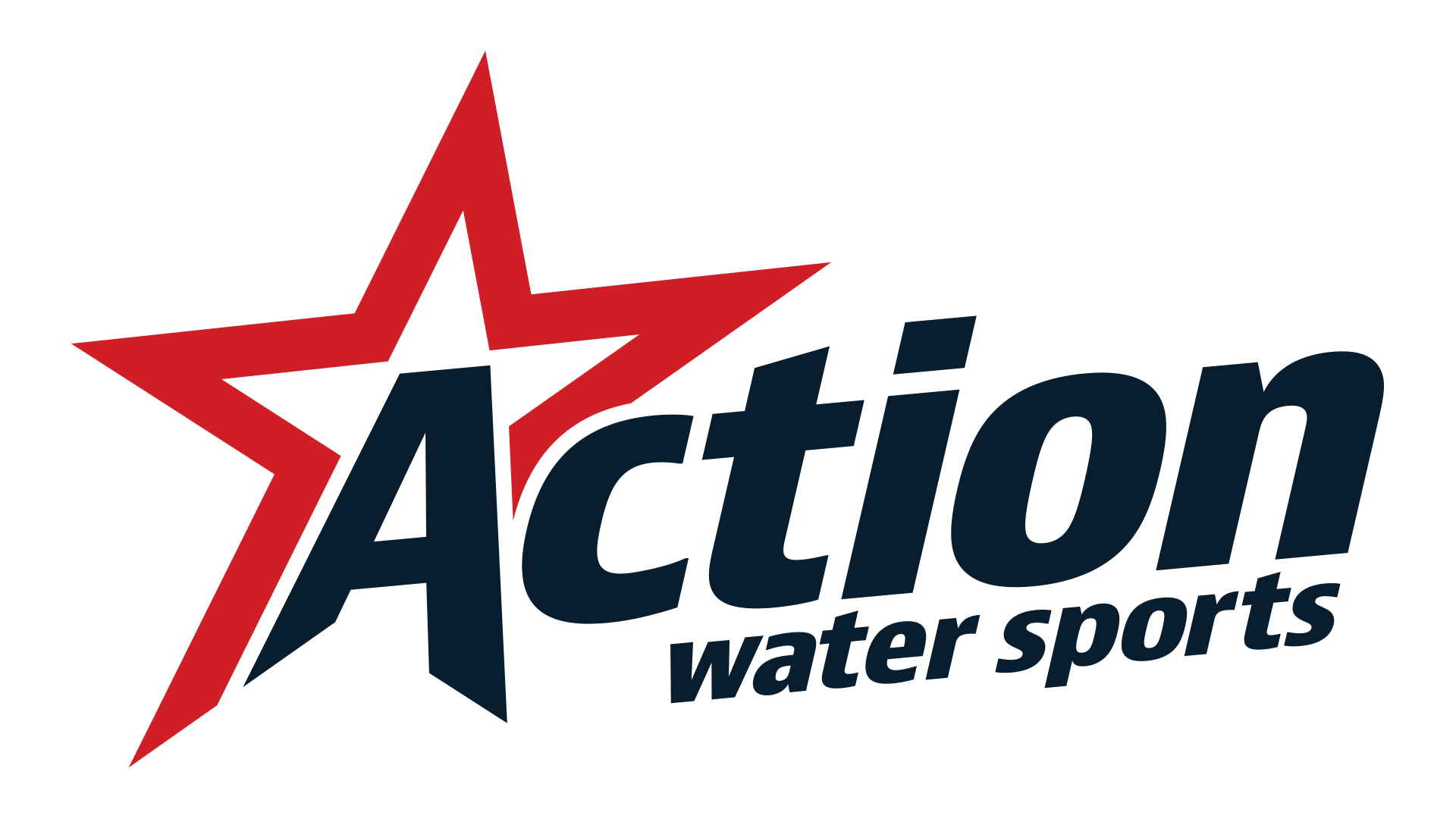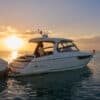Learn how to handle every interaction with another boat here.
Busy weekends on the water are just around the corner. You know what I’m talking about…the crowded fourth of July waters. Regardless of where you choose to celebrate the 4th, if you’re on the water, it’s almost guaranteed it’s going to be busier than normal. We’re here to help you safely navigate the water by teaching who has the right of way.
Understanding the right of way on the water is important for keeping everyone safe. Especially in crowded waters where there is no room for error. Before heading out on the water, know how to navigate any situation with ease.
Being knowledgeable about boating safety will ensure a safe and fun trip on the water every time you set out on an adventure. We’re here to make sure you are well prepared for all situations on the water.
The Basics
Before we get into the specific situations, we need to review the basics of boater’s navigation. First let’s start by defining what we mean by “who has the right of way”.
In the context of boating, “right of way” refers to the right for one vessel to proceed ahead of another in a situation where their paths intersect. The boat with the right to proceed is determined by laws and regulations for Preventing Collisions at Sea (COLREGs). These provide guidelines for navigation to ensure safety and order on the water to avoid collisions.
How to Determine Who Has the Right of Way
Based on the COLREGs guidelines, there are general rules and specific situation rules to keep everyone on the water safe. Let’s begin by reviewing the general rules.
Powerboats vs Non-Motorized Boats
No matter the situation, powerboats must always give way to non-motorized boats. This includes sailboats, kayaks, paddleboards, and more. When driving a powerboat, you must allow a non-motorized boat to continue without interrupting their path.
There is no situation where the powerboat has the right of way when a non-motorized boat is involved. Always be aware of these boats to stay out of their way so they can continue.
Head-On Situation
While most states and waterways enforce counterclockwise travel, you still may run into a head-on-head situation with another boat. When this happens, you should always pass on port side of the other boat. This means that your port side of the boat should be the side passing the other boat.
Understanding this common situation will ensure safety as well as order when traveling on the water. Whenever faced with head-on-head with another boat, move over to give them plenty of room to travel by.
Crossing Situation
When two powerboats are crossing paths one has to give the right of way to another. This is determined by the “starboard” and “port” side boat. The starboard boat should always give way to the port boat.
As a refresher, starboard is the right side of the boat when sitting and facing the bow. Port is the left side of the boat.
An easy way to know how to handle this situation is to look at the color of light you see on the side of the boat. If you see a green light (indicating the starboard side), you have the right of way. If you see a red light (indicating the port side), you must give way to the other boat.
Whenever in a crossing situation, it’s always good to be aware of all surroundings. Even if you have the right of way, it’s important to slow down and make sure the other boat is following the correct rules. It’s better to practice caution than to assume the other boater is as educated as you are.
Overtaking and Being Overtaken
Another situation is when you are overtaking another boat, or another boat is overtaking you. For this situation, both boats are traveling in the same direction. The boat behind the other boat is moving at a faster speed than the one in front. Therefore, the boat in the rear must overtake the front boat to maintain speed.
In this situation, the fast moving, rear boat can pass on either side of the slow moving, front boat. Always be sure to give the front boat plenty of room and make sure the front boat sees you.
As the boat being overtaken, it’s important to continue straight and not change path. Changing your path while being overtaken could result in a collision so continue straight and allow the other boat to pass safely on the side.
Special Situations
Along with your typical situations that you will run into thousand times as a boater, there are unique situations to acknowledge as well. Let’s dig into these special situations.
Navigating Narrow Channels
Narrow channels can be tricky because you can’t always follow the general laws and rules of boating. Narrow channels are a bit of a gray area when it comes to laws. This is because the smaller, more maneuverable vessel should always give way to the larger boat.
Smaller boats can go shallower and can turn much easier than larger boats. Always use your best judgement when in a narrow channel and use caution.
When entering a channel, always give way to the boat that is exiting the channel. They do not have the ability to move out of the way so give them plenty of room to exit.
On Rivers and Channels connected to the Great Lakes, the upstream boat always has the right of way and the downstream boat must give way.
Anchored Boats
When a boat is anchored, it should be treated as a non-motorized boat. It is not able to maneuver and therefore should always be given the right of way. Always give the anchored boat plenty of space when passing.
Fishing Boats
Similar to anchored boats, fishing boats should be treated as a non-motorized boat. They should always have the right of way. Be sure to give fishing boats more than enough space as they have lines in the water.
Safety and Best Practices
Following these rules and regulations for whoever has the right of way on the water will ensure the safety of everyone on the water. They reduce the chances of a collision which is why it is so important to understand who has the right of way on the water.
Keep a Proper Lookout
As captain of your boat, always be aware of your surroundings. Just because you are educated with boating laws and regulations doesn’t mean everyone is. It’s extremely important to be cautious while on the water.
Communicate and Signal
If you’re unsure of what to do in a unique situation, communicate with the other boater and listen to signals. Go slow and work together with the other boater to avoid any collisions and maintain safety on both boats.
Safe Speeds
Speeding around the lake is always fun, however, it’s not always safe. On a busy weekend such as the 4th of July, stick to safe speeds based on the crowd. Use your best judgement to keep everyone out of harm’s way. Just because you can go 60 MPH, doesn’t mean you always should.
Take a Boater’s Education Class
It is always a best practice to take a boater’s education class. You will learn about many different situations and how to properly handle them. It will prepare you for many occasions on the water. We highly recommend taking an education class if you are going to captain a boat.
Enjoy Safe Boating
Understanding different situations and who has the right of way will help to keep everyone on the water safe. Follow these guidelines and rules to keep everyone safe and to continue enjoying the water.
If you have any questions about who has the right of way, call your local Action Water Sports. We are happy to help you stay safe on the water and to coach you through different situations.








